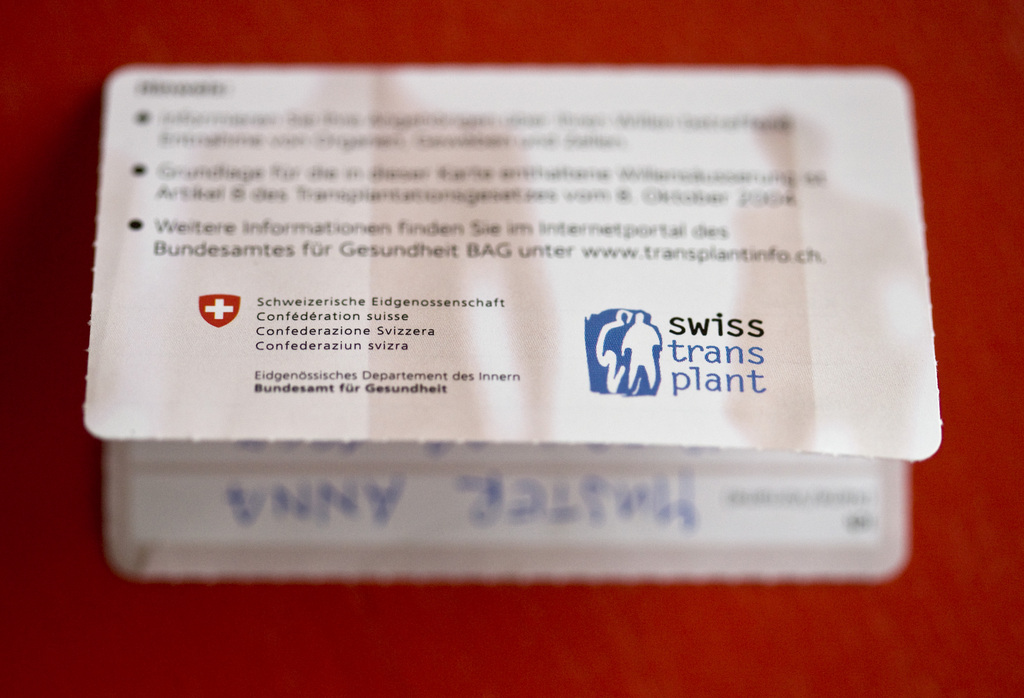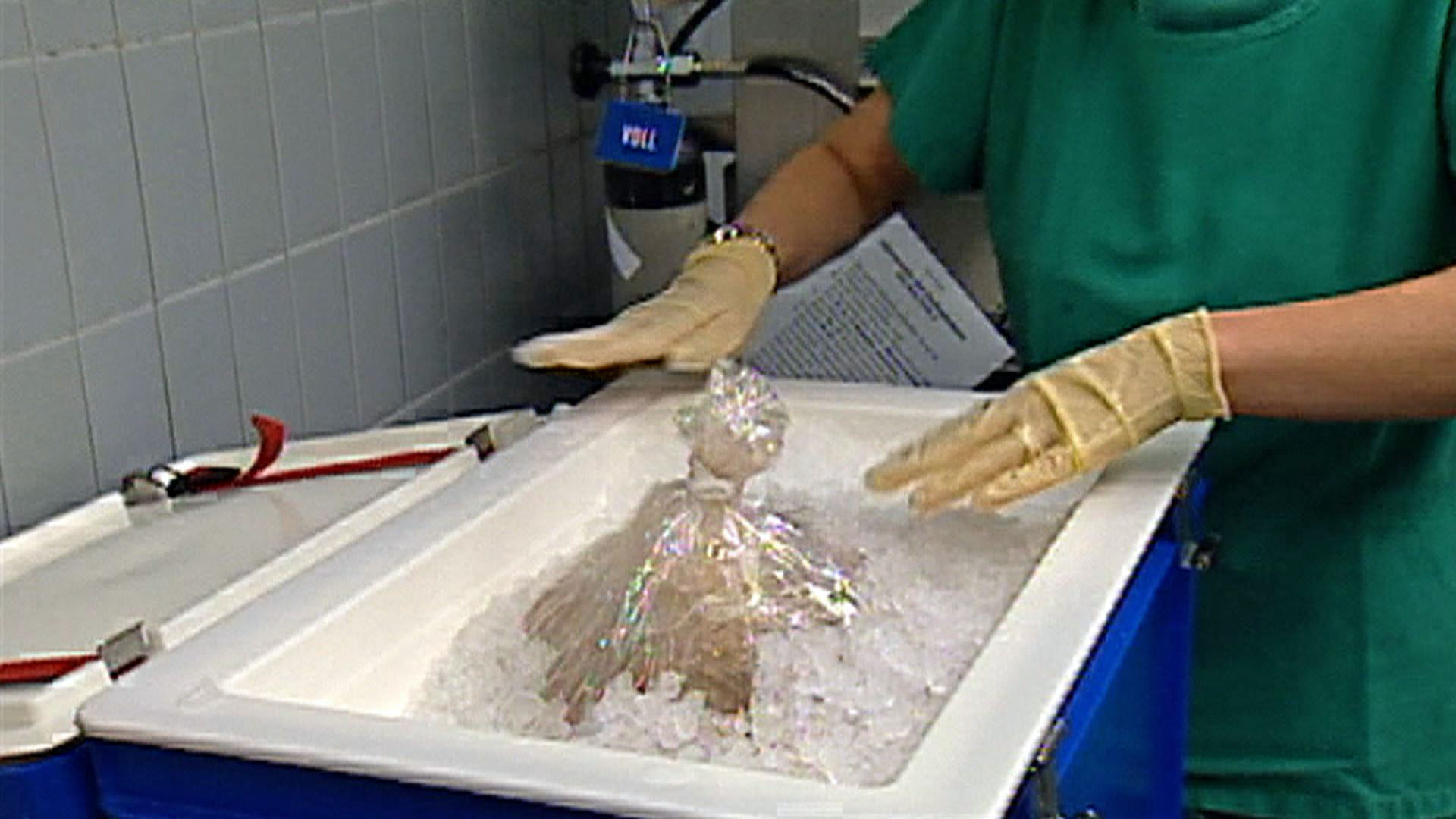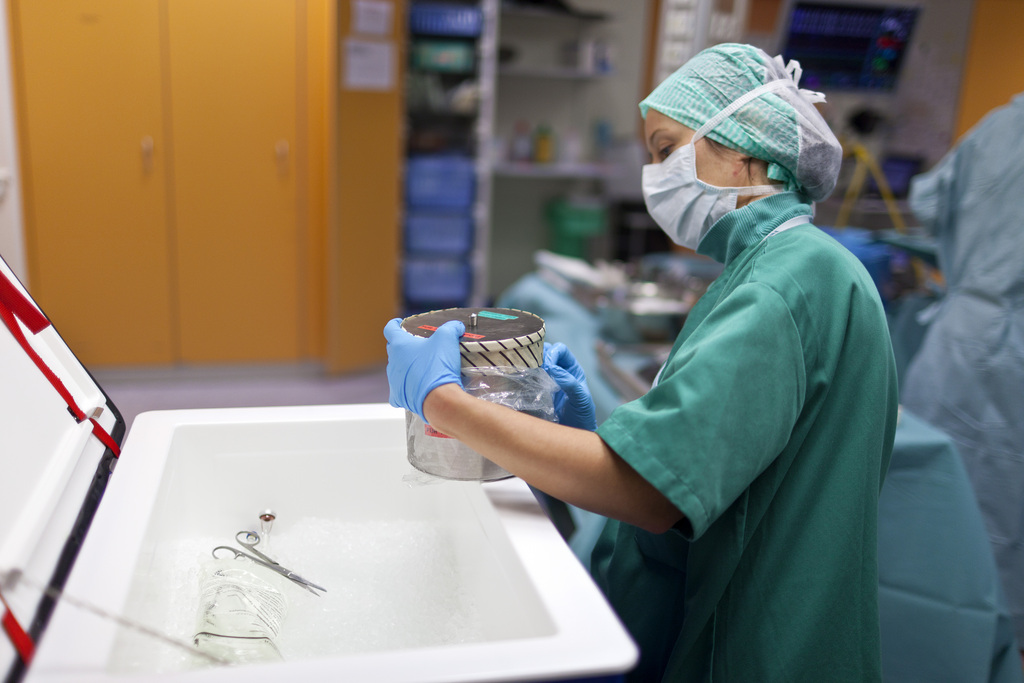Fewer Swiss donate organs, more need them

The total number of organ donations in Switzerland dropped last year, yet a record number of organs were imported from abroad. The waiting list for new organs, on the other hand, continued to get longer.
In 2012, organs were harvested from 96 people in Switzerland who had agreed to be donors after death. This was six per cent down on 2011 according to Swisstransplant, the organisation charged with organ allocation.
Releasing its annual report on Wednesday, Swisstransplant added that the number of living donors – people who give a kidney, a lobe of a lung, or a portion of the liver, pancreas or intestine – had decreased by eight per cent.
Four out of ten donors were found in hospitals outside transplantation centres – which shows the importance of involving all hospitals in finding donors, according to Swisstransplant. In addition, the average age of donors was 54 and most were men.
However, 1,165 people were waiting for a new organ last year, up 8.5 per cent on the previous year.
The negative trend continued in the number of people – 453 – who actually received new organs: this was down ten per cent on 2011.
The greatest increase in demand was for a new heart: this list grew by 58 per cent and was followed by a lung (an increase of 25 per cent) and a kidney (eight per cent). A third of kidney donations last year came from living donors. Demand for a new liver or pancreas remained stable.
Fifty-three patients died while waiting for a new organ, eight fewer than in 2011.
A record 37 organs were imported into Switzerland from Europe and transplanted. Seven organs, for which no suitable donor could be found, were exported.

More
Transplant rates vary from region to region
Action plan
On March 8, the Swiss cabinet came out against automatic organ donation – when anyone who has not refused is considered a donor. It hoped an action plan would increase the currently insufficient number of actual donors to 160.
In order to do this, the government will this year discuss and define the central issues with the cantons and parties involved, with a view to implementing an action plan by 2017.
It said these coordinated measures would focus on the intervention of highly trained coordinators at local, regional and national levels. Centralised data gathered from the population would also play a central role.
Switzerland’s donation rate –12.8 per million inhabitants – is one of the lowest in Europe. It’s a third of the rate in Spain (at 35.3 per million the highest in Europe) and half the French rate (24.8 per million). A study by the National Committee for Organ Donation estimated that a rate of 36.5 per million was possible.
One donor can potentially donate seven solid organs (heart, lungs, liver, pancreas, small intestine and two kidneys), as well as corneas, skin, blood, and various other tissues and cells.

In compliance with the JTI standards
More: SWI swissinfo.ch certified by the Journalism Trust Initiative











You can find an overview of ongoing debates with our journalists here . Please join us!
If you want to start a conversation about a topic raised in this article or want to report factual errors, email us at english@swissinfo.ch.